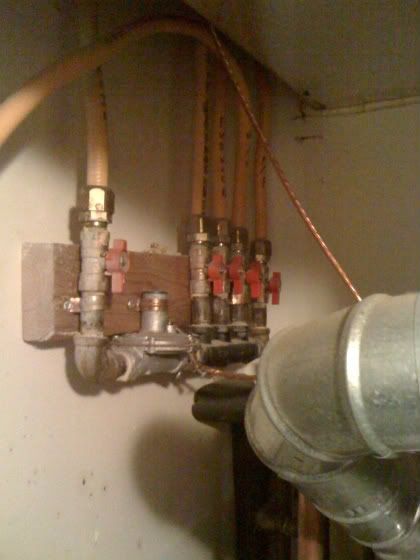The one thing you need to know is what the demand is for the whole house in CF.
That regulator there after the main shut off tells you that you have higher then normal pressure supplying your house. The orifice in there, regulates the pressure to the secondary side of the regulator which is normally around .5lb (psi) for nat gas.
The secondary side is usually calculated by volume, so that manifold and zoned branches might not have enough volume to handle another appliance at the same time.
Two ways to get around this would be to hook it up the way you are thinking of on an equally demanding zone,
You would remove the existing gas valve and nipple below it.
then use a longer black iron nipple from the manifold up to get clearance above the other valves.
Then install a black iron tee, install your existing gas valve to the top of the tee, and a new gas valve on the side out of the tee for the garage run.
You could just use more black iron fittings and nipples to go through the garage wall from inside then put a shut off and quick connect adapter out in the garage like they use on air tools for the burner hookup.
You want at least 4 full wraps of teflon tape for all pipe joint fitting connections.
To use you just shut off the valve for that other appliance, and open up the garage valve while you are using the burner in the garage.
Or The second way would be to get another nat gas regulator calculated to handle your draw. You then put a tee in between the main shut off, and the first regulator. Then you would install the new regulator out of the tee, then a gas shut off valve, then your new gas line going to the garage would attach to that. That way you could use everything at once.




